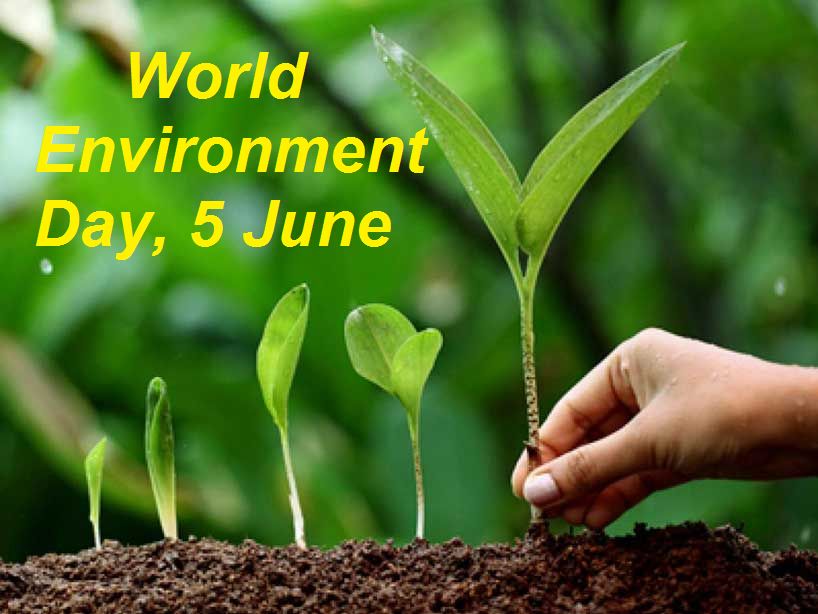Environmental protection has emerged as one of the key priorities of the 21st Century. The importance of environment has been repeatedly highlighted at various national and international platforms. 5th June is marked as World Environment Day (WED). On this day, various conferences, rallies and programs are organized with the aim to raise awareness and synergize efforts towards fostering a sustainable environment.
The importance accorded to a sustainable environment at the global level is evident from the UN Sustainable Development Goals (SDGs) which are focused on mitigating environmental damage and ensuring the conservation of available natural resources. It is imperative to protect the environment as issues related to it are interconnected with each other which exacerbates existing challenges from climate change to poverty alleviation. health and social problems related to the environment directly impact the economy. A declining economy triggers more poverty. Resultantly, increasing poverty has the potential to give rise to internal unrest which can ultimately lead to more instability putting greater pressure on natural resources.
There are a number of activities which can worsen the planet’s ecology. These include deforestation, carbon emissions, industrial effluents, excessive use of non-degradable materials, burning of fossil fuels, agricultural runoffs and waste mismanagement. While several of these issues have received considerable attention from the international community and are part of policy-making, one aspect which has largely been ignored is the conflict-environment nexus. Over the years, armed conflicts have damaged the Earth’s ecosystem to a considerable degree.
Starting from World War II, the nuclear attacks on Hiroshima and Nagasaki caused catastrophic damage to the environment. The most dangerous aspect of this attack was the radiation which remained in the atmosphere and seeped into the soil for a considerable period and caused significant harm not only to human beings but the environ as well. The impact of these radiations was even felt decades after the attack.
During the Cold War, both Soviet Union and the United States indulged in an arms race of their nuclear stockpiles. Both sides tested nuclear weapons extensively. It was shortly after these tests that a shift in weather patterns, unexpectedly large yields and contamination of agricultural production was observed. Moreover, during the Vietnam War, toxic chemicals such as Agent Orange and Napalm were deliberately used to get rid of forests which were providing shelter to enemy forces. In the Korean War, dams and irrigation systems were specifically targeted. Resultantly, North Korea lost 75% of its water supply. The damage done in these conflicts proved extremely destabilizing for the environment.
In the first Gulf War, the Iraqi forces decided to set numerous Kuwaiti oil fields on fire. The fire rose as high as 22,000 feet into the atmosphere and spread nearly 800km. This condemnable act turned into a disaatrous oil spill on land and water bodies. The coastline was significantly affected and gave rise to several health-related issues as air quality and respiratory problems in Kuwait and neighboring countries. Wildlife also suffered the consequences of the fire which spread rapidly across the forests.
Despite the damage which was evident in the above stated conflicts, there has not been any substantial shift in this trend as we continue to witness irreversible environmental damage due to increasing regional conflicts. In Yemen, the ongoing fighting has taken a high toll on the environment. The attacks by the warring factions have damaged the water infrastructure of the country. These actions have deprived thousands of people from clean drinking water and caused 4000 deaths mainly from water-borne diseases since 2017. The damage done to the agricultural system has become a source of food insecurity for 16.2 million Yemeni citizens.
The Syrian War is another recent example in this regard. The war which has been going on for more than a decade now has devastated the environmental conditions of the country. The aerial bombardment carried out on the Syrian oil and industrial facilities, the use of toxic chemicals and the mismanagement that followed has considerably polluted the country’s land, water and air. A devastated agricultural system is also the legacy of this conflict. The Syrian population is at the risk of getting fatal diseases owing to the degradation of the environment. Between 2010 and 2017, the deaths caused by air pollution have increased by 17 percent. During the war, Syria lost 20% of it tree cover mostly due to forest fires as a result of bombardments. impact of explosives on the Syrian environment is beyond imagination.
As we observe World Environment Day today (5 June), the nexus between armed conflicts and environmental damage needs to be highlighted with more emphasis. The civilian population of conflict-affected regions has and will continue to suffer the consequences of irreparable environmental damage. When the war is over, these people need a suitable environment to live in. Hence, it is essential to identify and prioritize environment-related issues in the affected regions given that their impacts will continue even after the on-ground fighting is over. These issues demand extensive time, tireless efforts and cross-sectoral collaboration between states, NGOs, civil society and environmental experts. The failure to timely address such issues can become a major threat not only for the people living in conflict-ridden areas but for the rest of the world as well.
Shaza Arif is a Researcher at the Centre for Aerospace & Security Studies (CASS). The article was first published in Eurasia Review. She can be reached at [email protected]
Image Source: Mutena, Nyasha. “Pakistan to host World Environment Day 2021”, The Voice Agency, 24 February 2021, https://thevoiceagencyzim.com/2021/02/23/pakistan-to-host-world-environment-day-2021/





